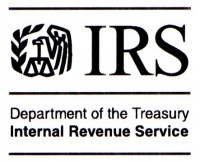 Everyone who files a federal tax return must determine which filing status applies to them. It’s important you choose your correct filing status as it determines your standard deduction, the amount of tax you owe and ultimately, any refund owed to you.
Everyone who files a federal tax return must determine which filing status applies to them. It’s important you choose your correct filing status as it determines your standard deduction, the amount of tax you owe and ultimately, any refund owed to you.
There are two things to consider when determining your filing status:
First, your marital status on the last day of the year determines your filing status for the entire year. Secondly, if more than one filing status applies to you, choose the one that gives you the lowest tax obligation.
Here are the five filing status options:
1. Single. This will generally apply to anyone who is unmarried, divorced or legally separated according to your state law.
2. Married Filing Jointly. A married couple may file a joint return together. If your spouse died during the year, you may still file a joint return with that spouse for the year of death.
3. Married Filing Separately. A married couple may elect to file their returns separately.
4. Head of Household. This generally applies to taxpayers who are unmarried. You must also have paid more than half the cost of maintaining a home for you and a qualifying person to qualify for this filing status.
5. Qualifying Widow(er) with Dependent Child. You may be able to choose this filing status if your spouse died during 2007 or 2008, you have a dependent child and you meet certain other conditions.
There’s much more information about determining your filing status in Publication 501, Exemptions, Standard Deduction, and Filing Information. Publication 501 is available on the IRS Web site at IRS.gov or by calling 800-TAX-FORM (800-829-3676).


